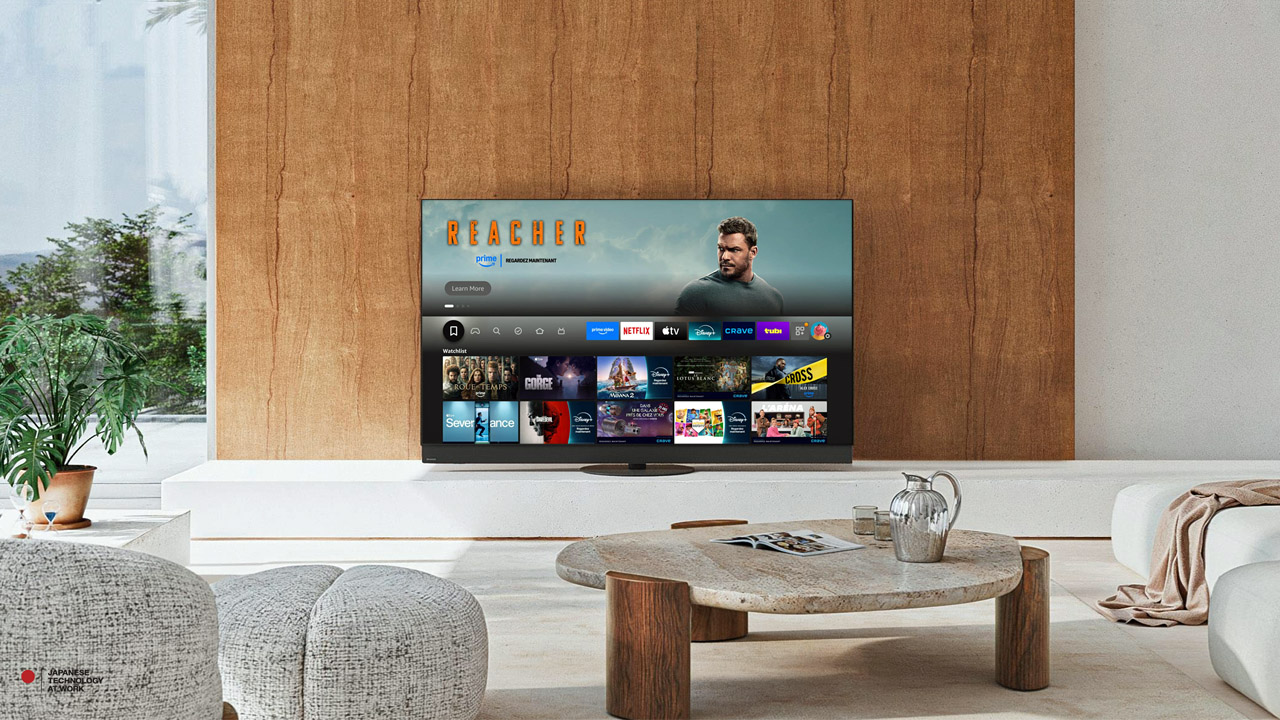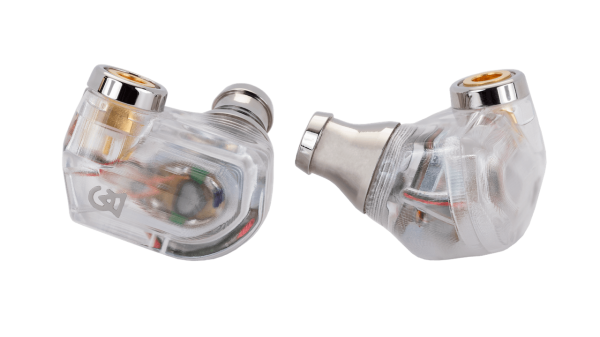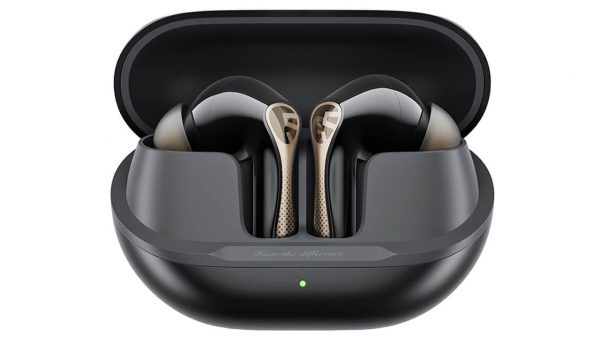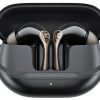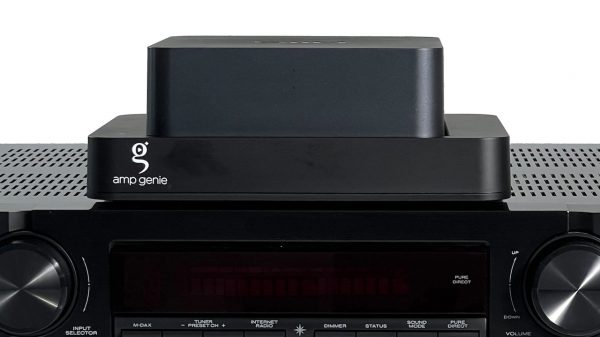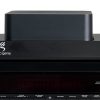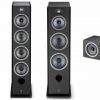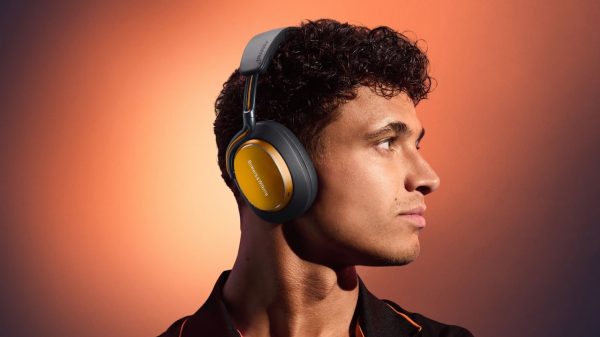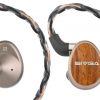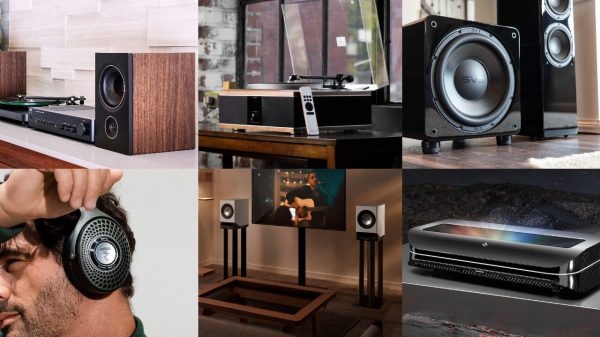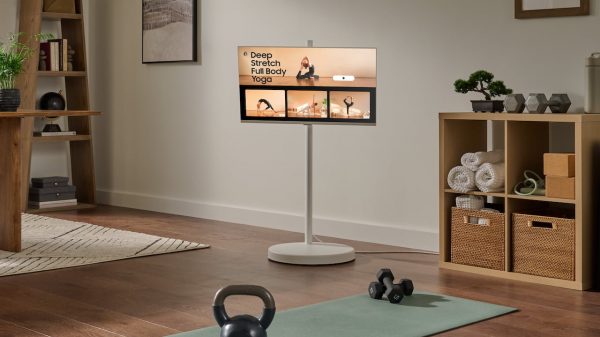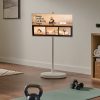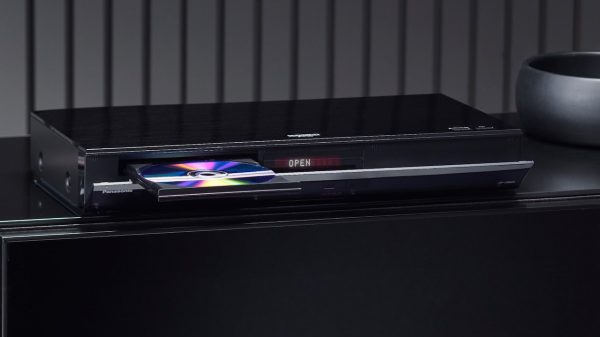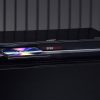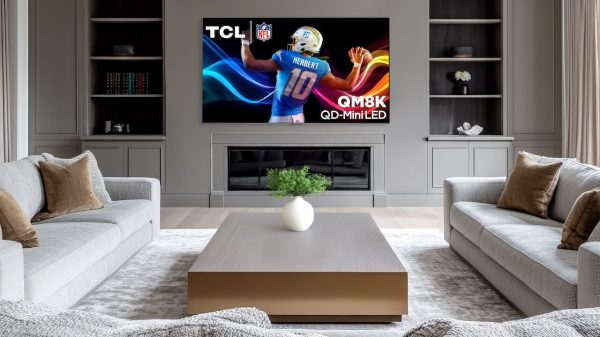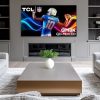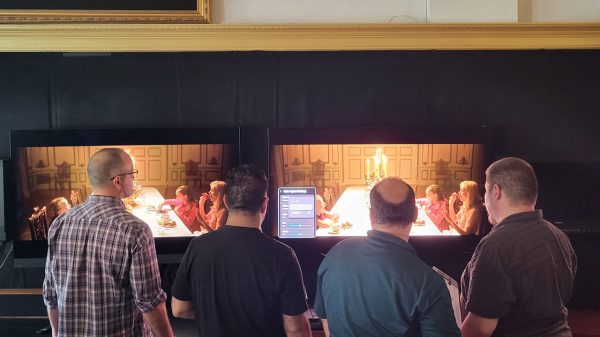2025 has been an exciting year for high performance OLED televisions and it’s not even half over yet. We’ve seen an entirely new OLED panel design from LG Display, the Primary RGB Tandem OLED panel, offering a big improvement in brightness, which has previously been OLED’s Achilles Heel.. And Samsung Display has refined their own OLED panel (QD-OLED) with improved brightness and performance as well.
LG’s WRGB panel uses white, red, green and blue OLED sub-pixels, while Samsung uses blue OLED pixels with a Quantum Dot color layer for color reproduction. Each approach is valid but Samsung’s QD-OLEDs have historically been a bit brighter than LG’s WRGB OLEDs and offer a wider color gamut and higher color volume, which can be seen on some 4K/HDR content.
In 2025, Samsung’s latest QD-OLED panel is included in Sony’s BRAVIA 8 II, as well as in Samsung’s S90F and S95F OLED TVs (up to 77 inches). The S95F is a strong performer for video quality, but it’s unique glare-free screen has drawn some criticism from consumers due to black level performance in bright rooms. The Samsung S90F and Sony BRAVIA 8 II use a glossier screen which maintains solid black levels in brighter rooms, but at the expensive of some on-screen glare and light reflection.
Meanwhile, LG’s latest Quad Stack Tandem RGB OLED panel is featured in LG’s G5 and M5 OLED TVs in 2025. The G5 in particular has received rave reviews this year for its high peak brightness, in both full screen mode and in a smaller 10% test window. Our friend Al Griffin over at Tech Radar measured the G5’s peak brightness in Vivid mode at over 2500 nits. Even in the more accurate Filmmaker mode, the TV put out over 2260 nits in a 10% window. We’ve seen the G5 and M5 up close at LG events at CES and at their NJ headquarters and can confirm that it’s a stunning performer.
But the LG G5 and M5 aren’t the only TVs that use LG Display’s new Quad Stack Tandem RGB OLED panel. Panasonic, who pulled out of the US TV market in 2016 after the demise of plasma TVs, is also using LG Display’s new OLED panel in their upcoming Z95B flagship OLED TV.
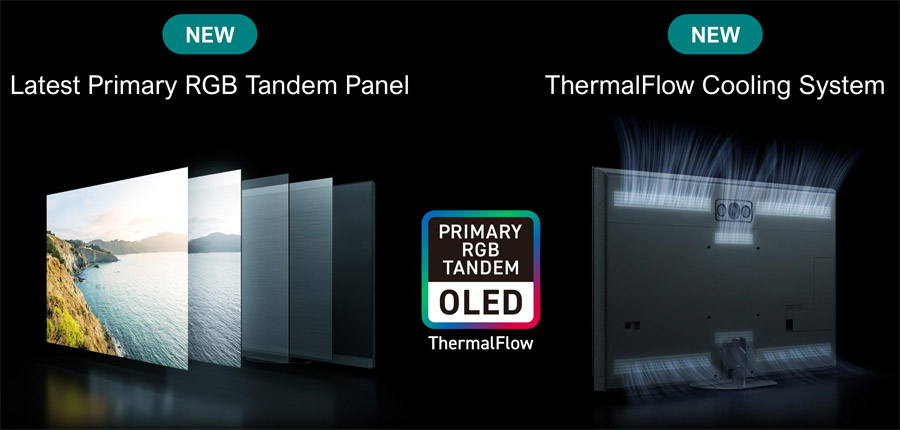
Panasonic is putting its own twist on the new panel, not just with its video processor but with a highly effective cooling system they call “ThermalFlow.” This system uses the chimney effect to passively draw heat from the panel out through the top of the TV through air vents. The ThermalFlow system should allow the TV to reach even higher peak brightness levels without running too hot. The system is passive, so you won’t have to worry about the whir of fans in the background.
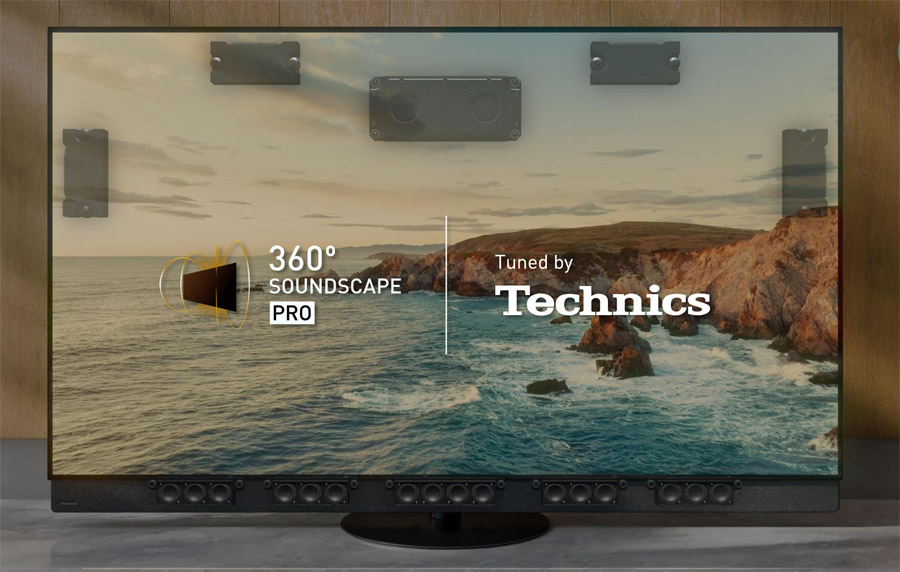
Panasonic has also tweaked the audio performance thanks to a partnership with the company’s Technics Hi-Fi brand. Up-firing speakers on the TV are now both higher and wider apart than they were on last year’s model, adding to a much improved sense of width and spaciousness on Dolby Atmos content. Instead of going with the wow factor of a super-skinny panel with a big bump at the bottom for inputs and outputs, they opted instead for a uniformly thick panel with plenty of cabinet volume for audio performance. This cabinet design is also critical for the ThermalFlow heat management system.
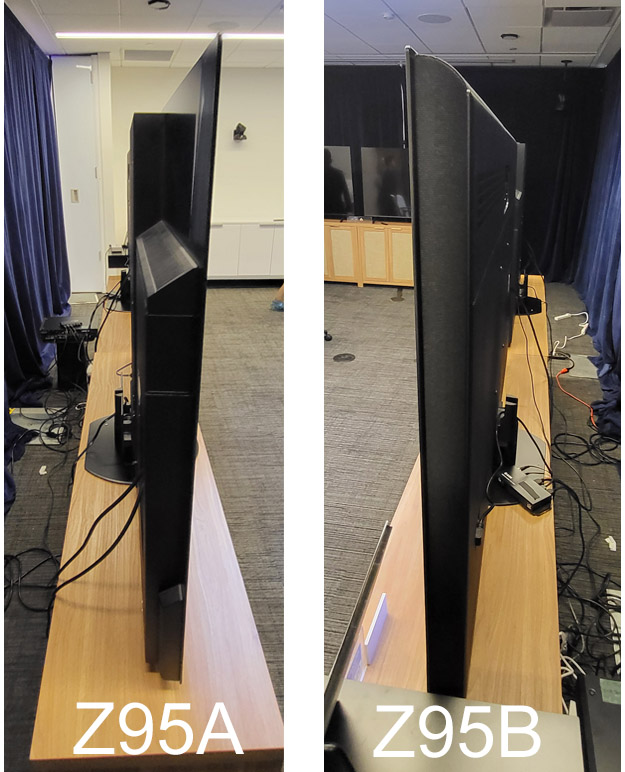
They’ve even got built-in beam-forming audio so you can direct the TV’s sound to specific parts of the room. This can be helpful when you’re working from home while your toddler wants to watch “SpongeBob SquarePants” in all his 4K/Dolby Vision Glory… repeatedly.

We got a chance to spend some quality time with the Z95B at Panasonic’s US headquarters in NJ earlier this week up against last year’s model and liked what we saw (and heard). Its predecessor, the Z95A was highly regarded among reviewers and consumers though we did not have a chance to review it at eCoustics. It used LG’s MLA (micro lens array) tech to boost the panel’s brightness, but the Z95B bested it in both white and color brightness producing a noticeably brighter and more saturated image.
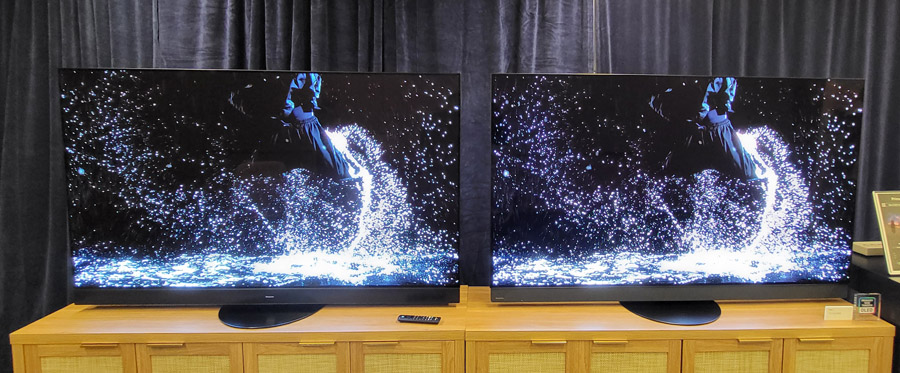
While Panasonic exited the US TV market in 2016, the company has continued making and selling TVs in Asia, Europe and other markets. So they haven’t exactly been standing still in the picture processing department (something they’ve always been well-known for). Their current generation processor, the HCX PRO AI Processor, Mark II, is on-board to handle video processing and upconversion.
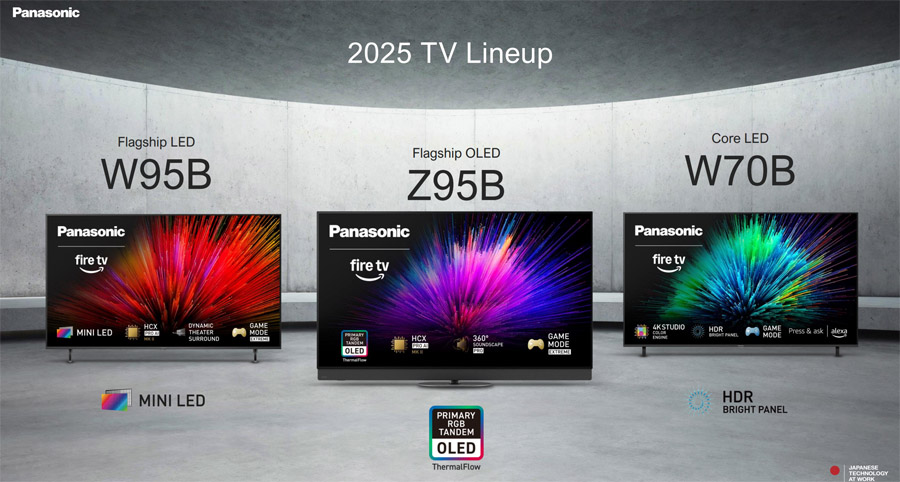
Last fall, the company returned to the US market with the Z85A and Z95A OLED TVs. I was impressed enough with the Z85A that when it fell to $999 for a 65-inch model, I bought one myself. It replaced a smaller Panasonic plasma, which is actually still going strong. But the improvements in resolution, brightness and overall operation were huge. No buyer’s remorse here.

Some folks (ahem, Caleb Denison) may criticize Panasonic for choosing the Amazon FireTV OS, but as a long time FireTV user myself, I have found nothing to complain about on the Z85A. There are some video ads which can display on the home screen but these can be disabled in the settings menu if you find them annoying or obtrusive. Google TV might have been a better choice, but honestly either platform provides a quick and robust interface with tons of options for streaming. It’s certainly competitive with LG’s and Samsung’s native Smart TV platforms.

For those who enjoy gaming on the big screen, Panasonic offers a True Game mode for fast panel response and optimized picture as well as a native 144 Hz panel for smooth, responsive motion reproduction. A Game Control Board allows gamers to tweak settings for their personal preference.
My only gripe with the Z85A continues with the Z95B – no DTS audio decoding or passthrough – but this feature is pretty rare on TVs these days, particularly on OLED TVs. Only the Sony models (BRAVIA 8, BRAVIA 8 II and A95L) include DTS:X decoding or passthrough. Samsung and LG both dropped support for DTS over the years (or never had it to begin with). Those who have a library of physical media or who use a Kaleidescape to watch movies in lossless DTS:X surround will need to add a receiver or soundbar with an available HDMI port and DTS:X decoding.
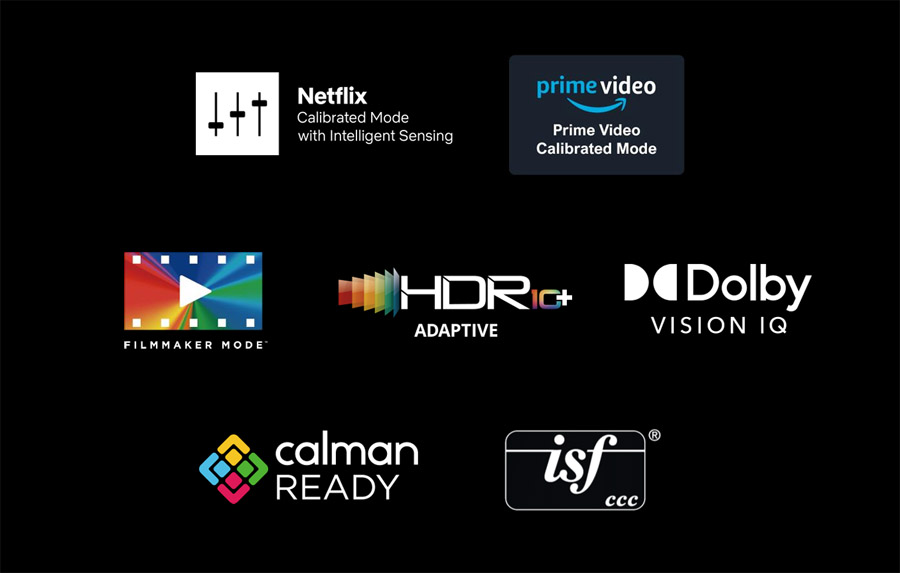
What is more interesting is that Panasonic’s Z95B will be the only OLED TV in the US market to support both HDR10+ and Dolby Vision IQ dynamic HDR formats. Samsung is squarely in the HDR10+ camp while Sony and LG are on Team Dolby with support for Dolby Vision only. Different streaming providers (and certain physical media) only support one or the other dynamic HDR formats, so it’s nice that the Panasonic Z95B will give you options. This will allow you to get the highest video performance out of virtually any content.
Price & Availability
July 2025 Update: Panasonic Z95B OLED TVs are available in 55-inch, 65-inch, and 77-inch screen sizes at Amazon.
Related Reading:
- I Bought a TV!
- Panasonic Returns to US Market with OLED and MiniLED TVs
- Hands-On with LG’s C5, G5 and M5 OLED TVs for 2025
- Sony Beefs Up 2025 TV Line with BRAVIA 8 II OLED
- Pricing and Other Details Unveiled for Samsung’s 2025 QD-OLED TVs

